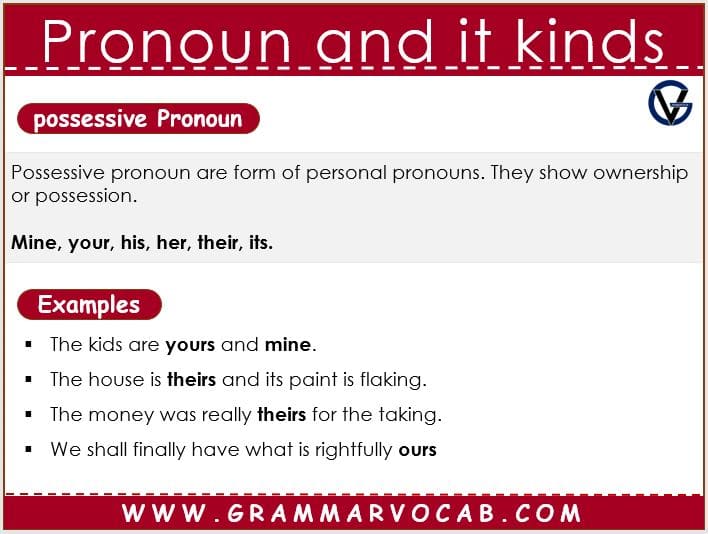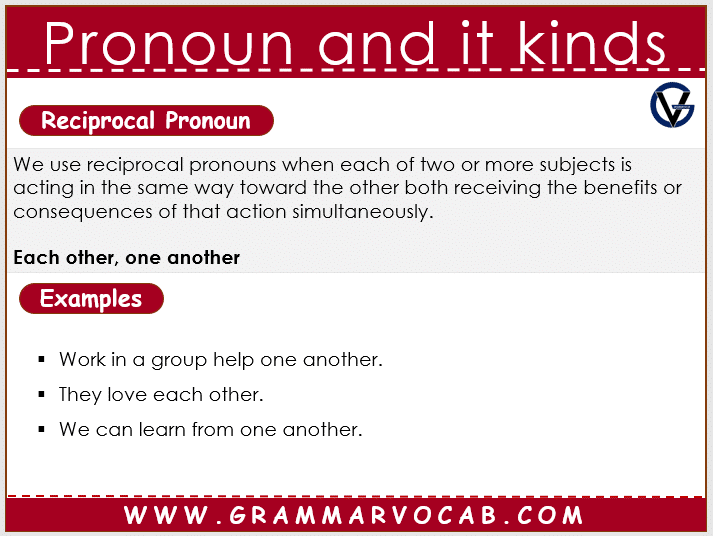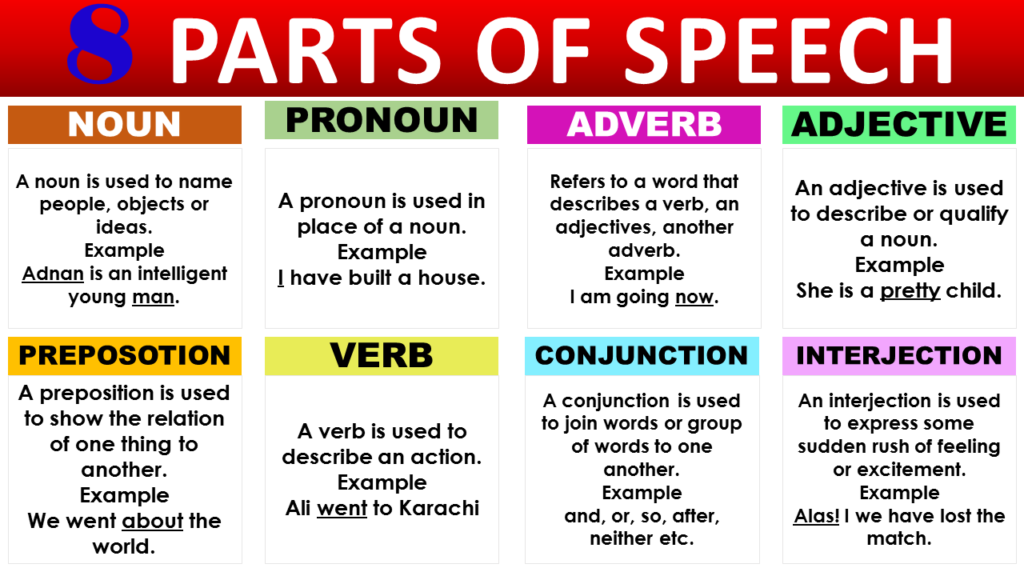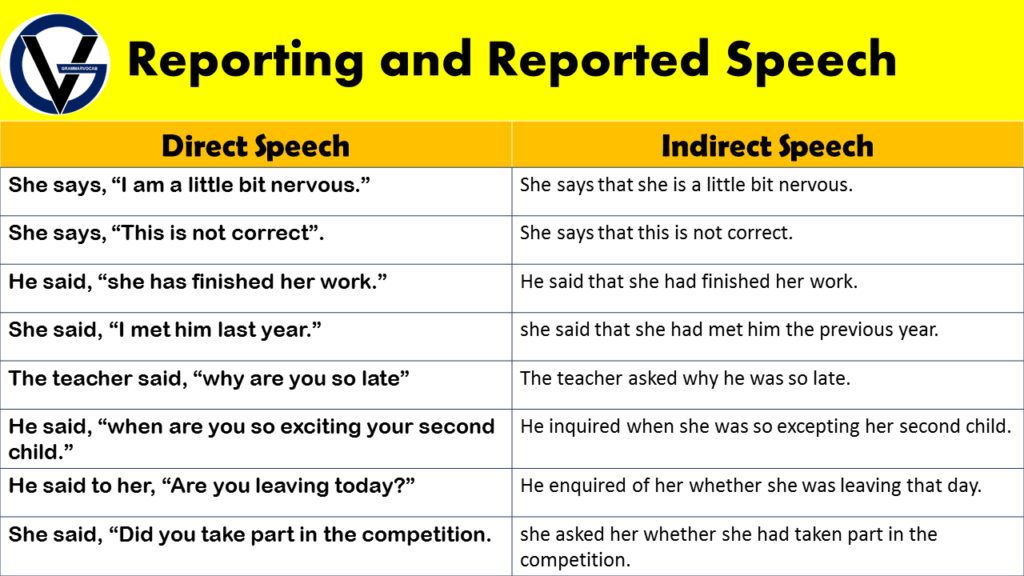Pronoun and its types!
Definition of Pronoun
A pronoun is a word used in place of nouns.
Examples:
it, he, she, they, we, himself.

Types of Pronoun
Personal Pronoun
- The personal pronoun in their different forms shows person, number, gender, and case.
Examples:
I, we, you, yourself, they, them l, etc.

Possessive pronoun
Possessive pronouns are a form of personal pronouns. They show ownership or possession.
Examples:
Mine, your, his, her, their, its.

Indefinite Pronoun
Indefinite pronouns refer to people, places, or things in general.
Examples:
All, either, any, nothing, few, each, few, other, no one, several, much.
Demonstrative Pronoun
The pronouns tell which one or which group of person, places or things are referred to.
Examples:
This, that, these, those.
Relative Pronoun
A relative pronoun refers to an earlier noun, sentence, or part of a sentence.
Examples:
- The students who (or that) have passed ore here.
- Was the Iraq- American war, which the world tried to stop, the result of Muslim disunity?
- Have the guests that we had invited arrived?
- In (b) and (c) which, that, whom may or may not be used. Was the Iraq American war the world…?
Distributive Pronoun
The pronouns which refer to persons or things one at a time are called distributive pronoun.
Examples:
Each, either, neither is called distributive pronouns because they refer to a person or things on at a time.
Possessive Pronoun
The words that used to indicate that something belongs to someone else it is used to indicate a relationship of possession in a broad sense.
Examples:
The possessive pronouns are mine, yours, his, ours, theirs.
The book is his.
The car is theirs.
The pen is mine.
Reciprocal pronoun
We use reciprocal pronouns when each of two or more subjects is acting in the same way toward the other both receiving the benefits or consequences of that action simultaneously.
Examples:
Each other, one another
- Work in a group helps one another.
- They love each other.
- We can learn from one another.

Reflexive pronoun
Reflexive pronouns are used when a person or thing is referring to the same person or thing. A reflexive pronoun always ends in self or selves.
Examples:
The nine reflexive pronouns are myself, yourself, himself, oneself, itself, ourselves, yourselves, themselves, and herself.
- That car is in a class all by
Intensive Pronoun
An intensive pronoun is used to refer back to a noun or pronoun in order to emphasize it.
Examples:
- I bought myself a house
(Myself is a reflexive pronoun)
This means that I bought the house for myself, not as a present for someone else.
- I bought the house myself.
(Myself is an intensive pronoun)
This is saying that no one helped me to buy the car; I bought it alone.
Example Sentences of Pronoun
Here are some examples of pronouns used in sentences:
- “She is my sister.” (The pronoun “she” refers to the subject of the sentence, which is the speaker’s sister.)
- “He likes to play soccer.” (The pronoun “he” refers to the subject of the sentence, who likes to play soccer.)
- “They went to the movies last night.” (The pronoun “they” refers to a group of people who went to the movies.)
- “I gave him the book he was looking for.” (The pronouns “him” and “he” both refer to the same person in the sentence.)
- “We went to the park and played with our dog.” (The pronouns “we” and “our” both refer to the speaker and at least one other person who went to the park and played with their dog.)
- “It is raining outside.” (The pronoun “it” refers to the current weather condition, which is rain.)
- “She told me that she would be late.” (The first pronoun “she” refers to someone who told the speaker something, while the second “she” refers to the person who will be late.)
- “He bought himself a new car.” (The pronoun “himself” is a reflexive pronoun, which refers back to the subject of the sentence, in this case “he”.)
- “The cat licked its paws.” (The pronoun “its” is used to refer to something that belongs to the cat, in this case, its paws.)
- “Who left their jacket on the chair?” (The pronoun “their” is used as a gender-neutral possessive pronoun, as the speaker does not know the gender of the person who left their jacket on the chair.)
Download this lesson of pronoun and its types in pdf.
Download PDF
Video Lesson



